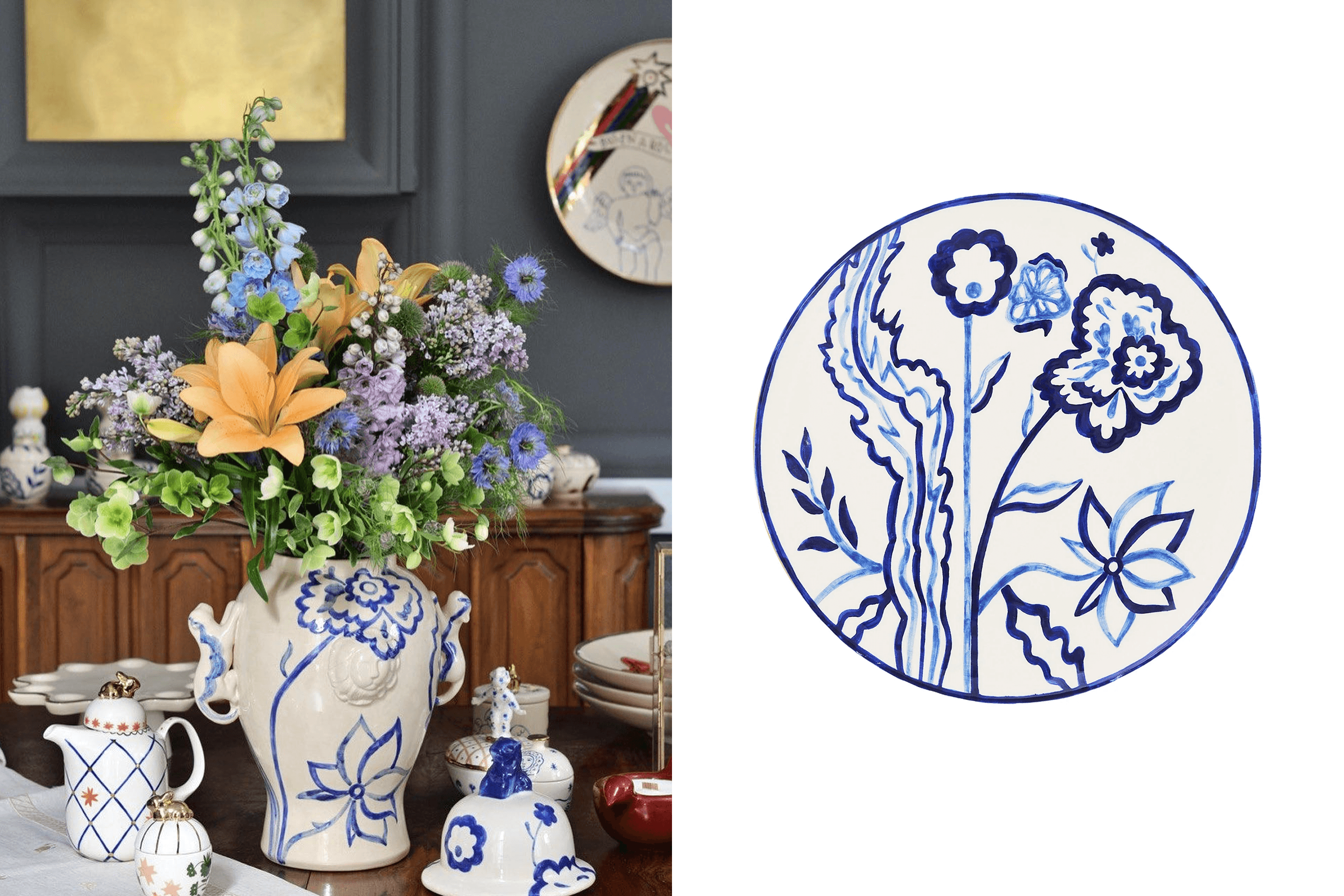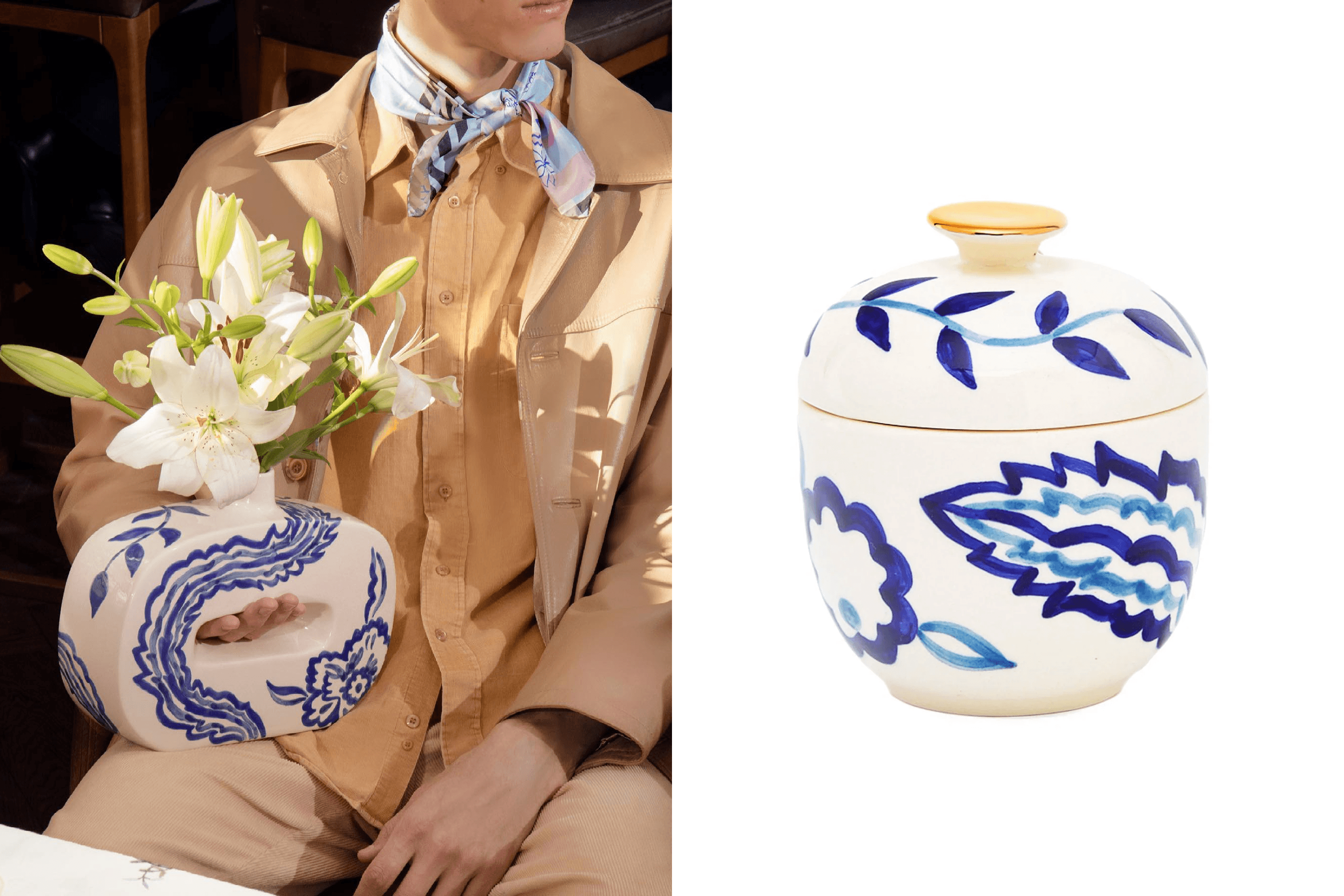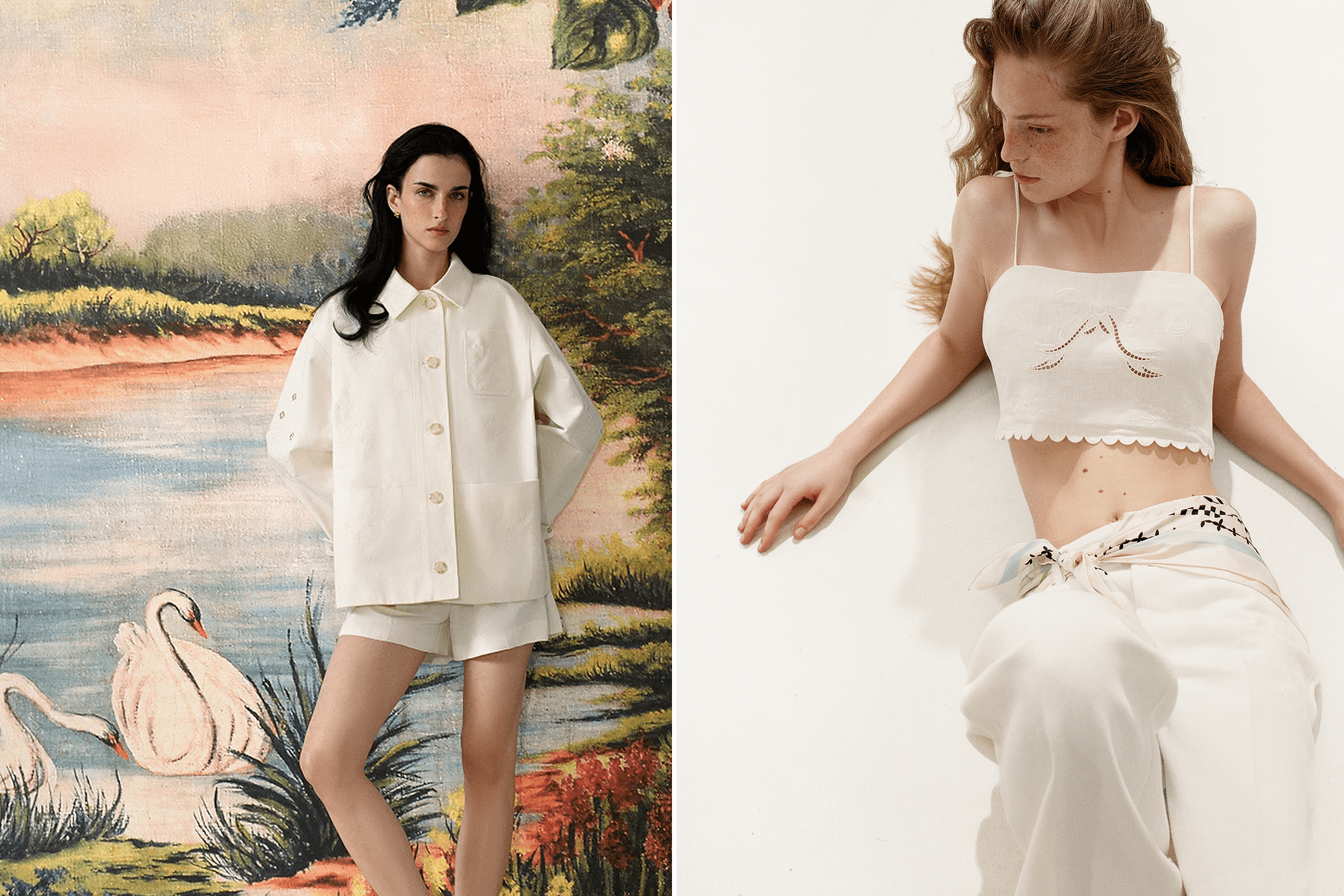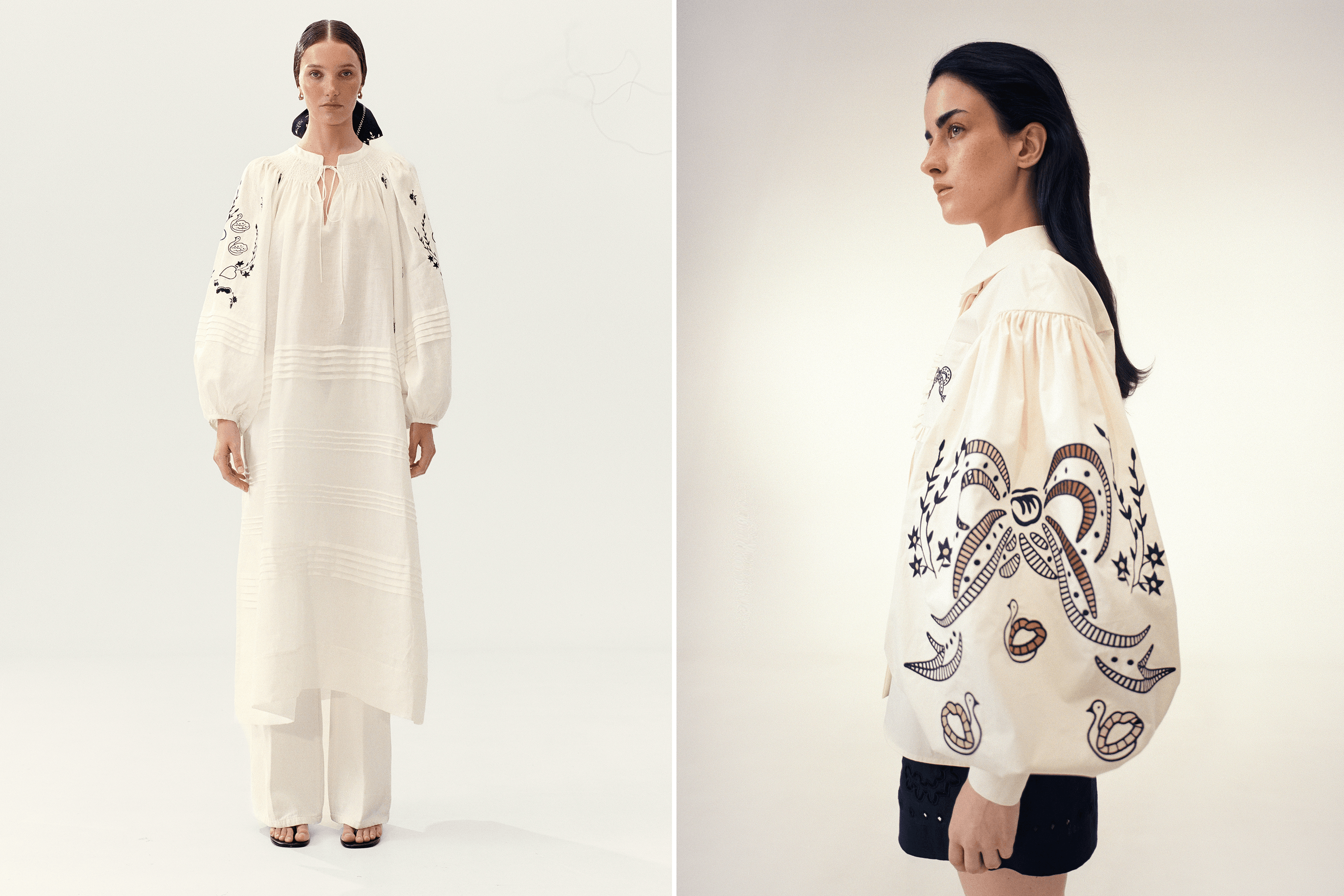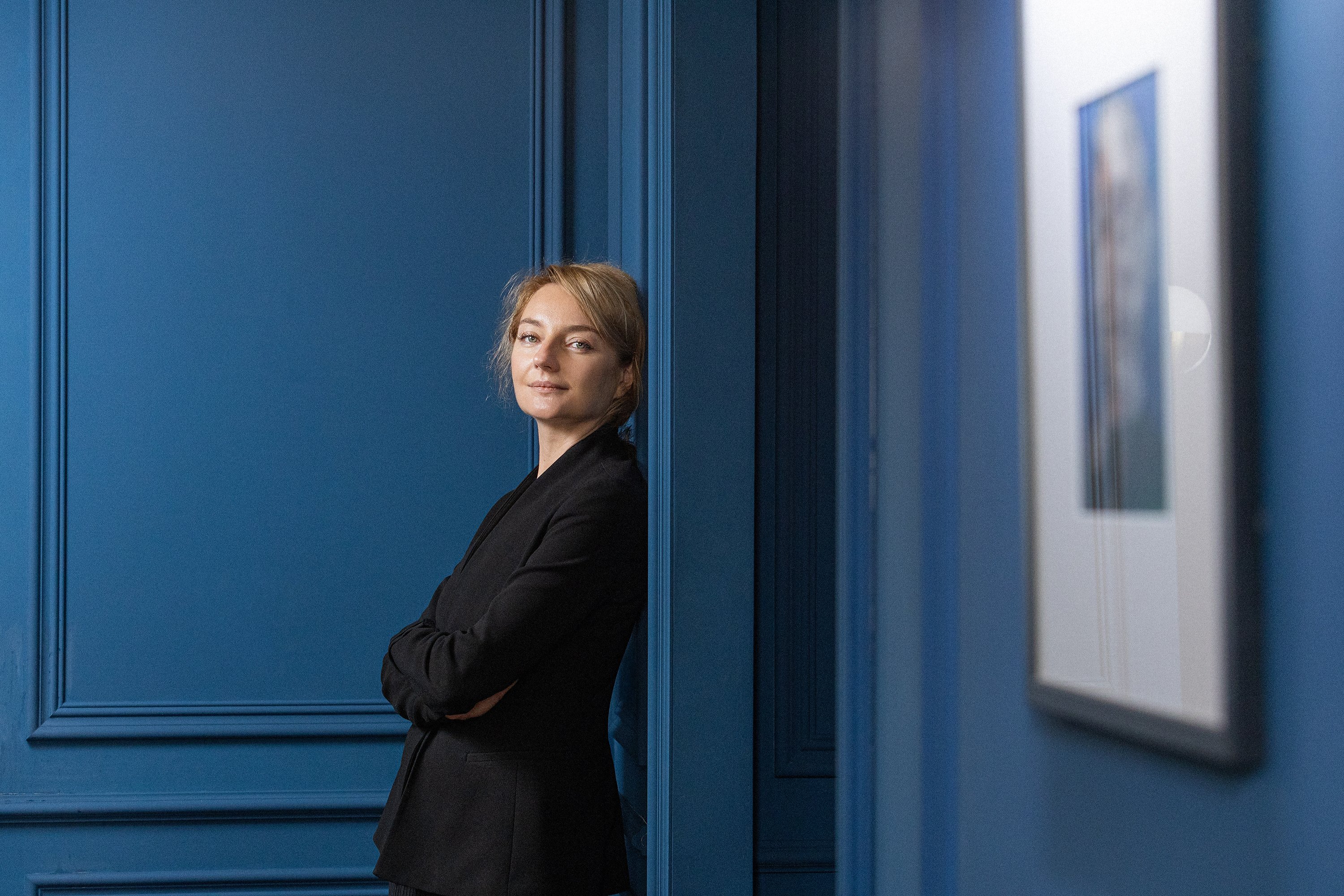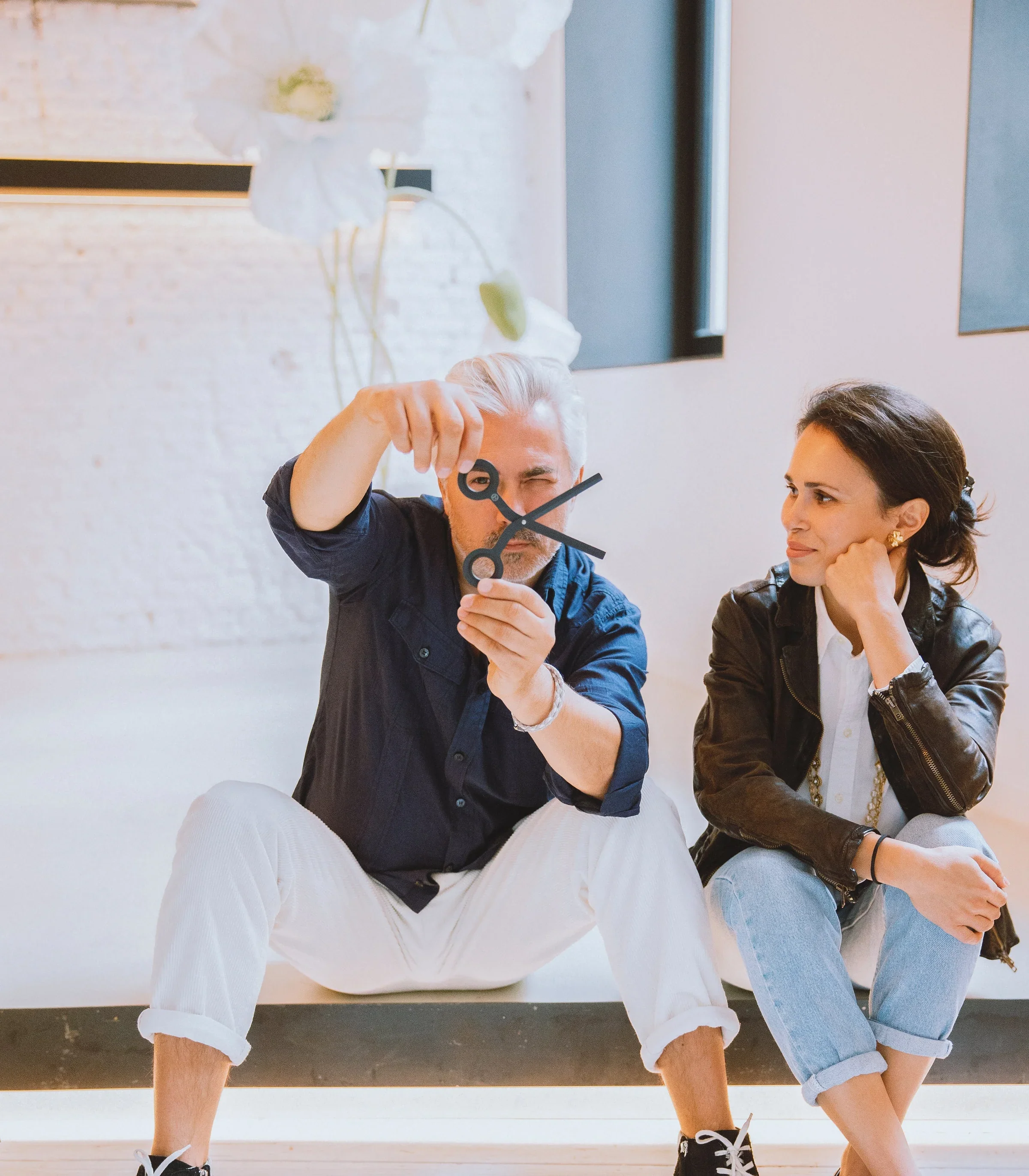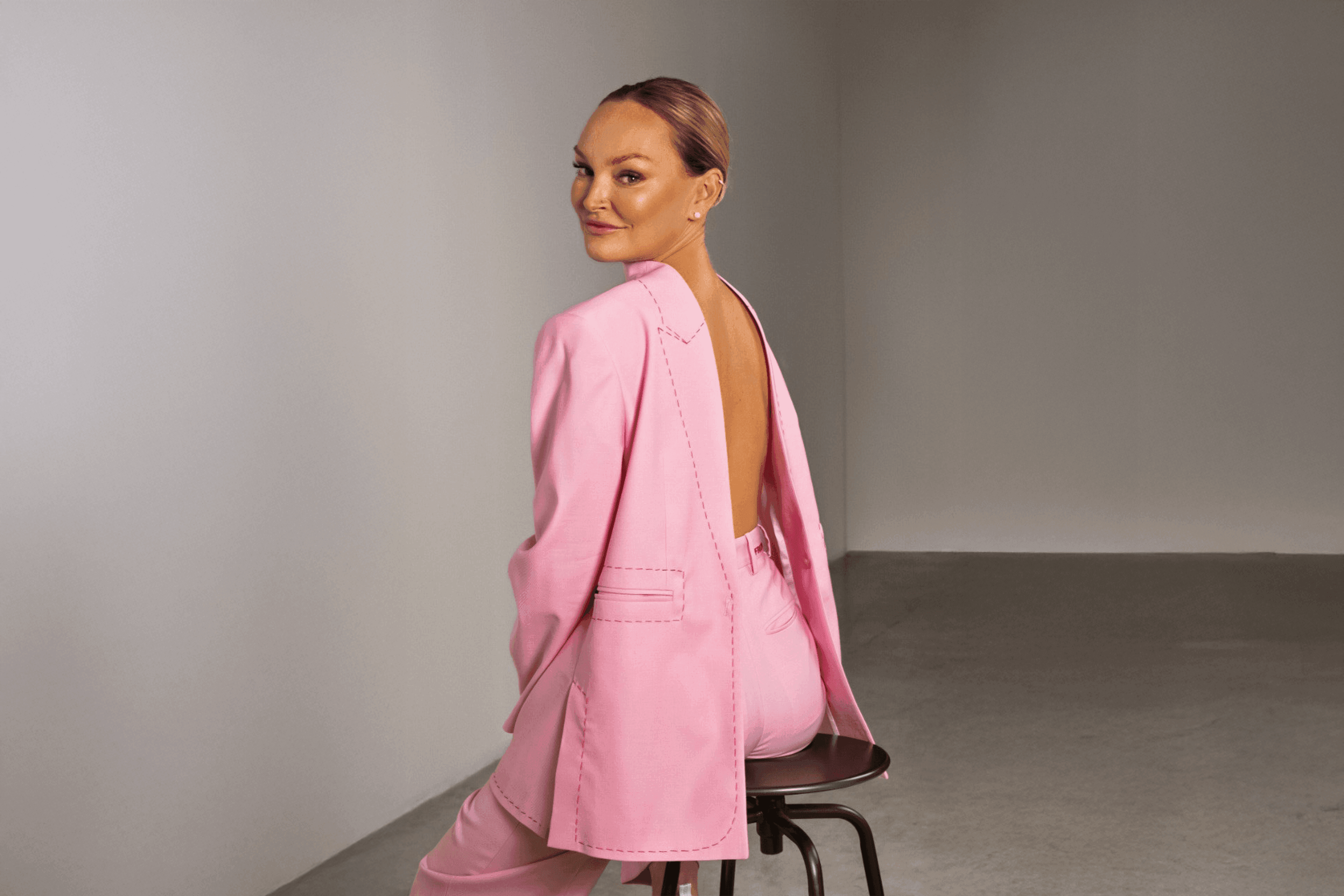Maria Gavryluk and Natalia Kamenska are young Ukrainian designers. Natalia previously co-founded the clothing brand Lake Studio, where Maria began her career as an assistant before becoming art director. In 2019, the two created Gunia Project. The name Gunia comes from a Transcarpathian word for a traditional woven sheepskin coat. The brand showcases Ukrainian craftsmanship through modern design. The designers draw inspiration from historical archives, folk songs, and ethnographic artifacts. Their first small collections were created with an investment of only $2,000, and for about two years, Maria and Nataliia worked side by side on their own. In 2022, despite the full-scale war, the company employed 150 Ukrainians, and Gunia Project pieces were sold in 17 cities across Ukraine.
Today, Gunia Project is represented in 20 countries worldwide through online platforms, and its creations can be found in personal collections of the Pope, the Emperor of Japan, Prince Harry, Boris Johnson, Kylie Jenner, and Kelly Rutherford. Ukraine’s First Lady, Olena Zelenska, wears Gunia Project’s signature jewellery and embroidered blouses. The brand also produces corporate gifts for major clients, including VESCO and Hyundai. In 2024, Gunia Project appeared in the popular Netflix series Emily in Paris.
YBBP journalist Roksana Rublevska spoke with Maria and Natalia about how they entered international markets, the development of the Gunia Project franchise, and the brand’s growth into a true cultural phenomenon.
Your brand was developing rapidly in Ukraine — you opened showrooms in Kyiv and Lviv and collaborated with leading retailers such as TSUM and AromaQue. After February 24, 2022, you managed to resume operations fairly quickly — and even gained more popularity. Why do you think that happened?
Natalia Kamenska: After the war began, demand for our items really increased. People began to reflect on their own identities and seek something handmade and meaningful. That’s what drove the brand’s growing popularity.
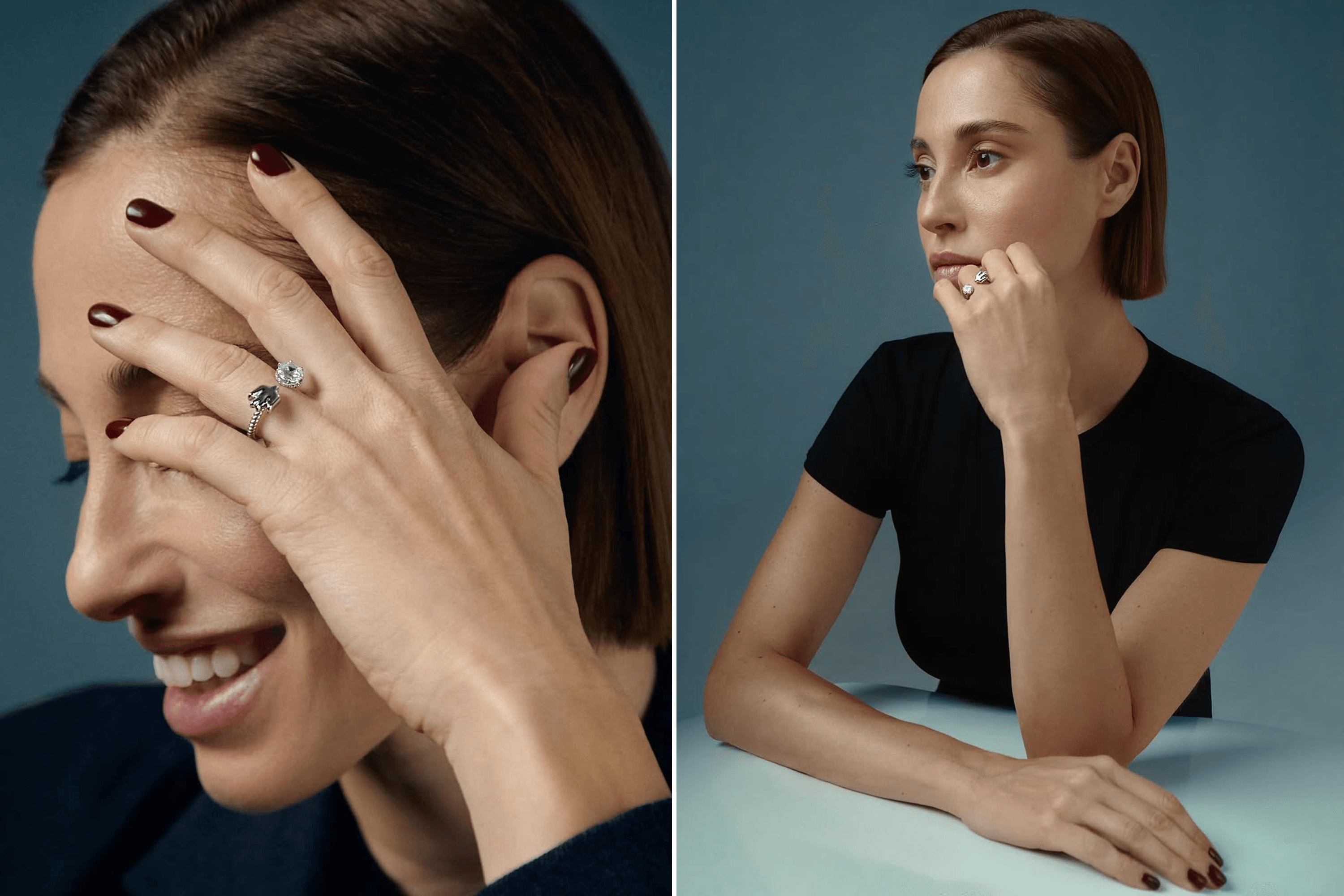
Maria Gavryluk: I wouldn’t call it a quick comeback, to be honest. It took us about two months after the invasion to relaunch our first sales — B2C orders through our website with international delivery. That was when we felt the support of our global audience. Within six months, we had re-established partnerships abroad with companies like GOODEE and added new ones such as Liberty and Globus Group. Our visibility also grew thanks to the media and influencers who helped introduce Ukrainian brands to the world.
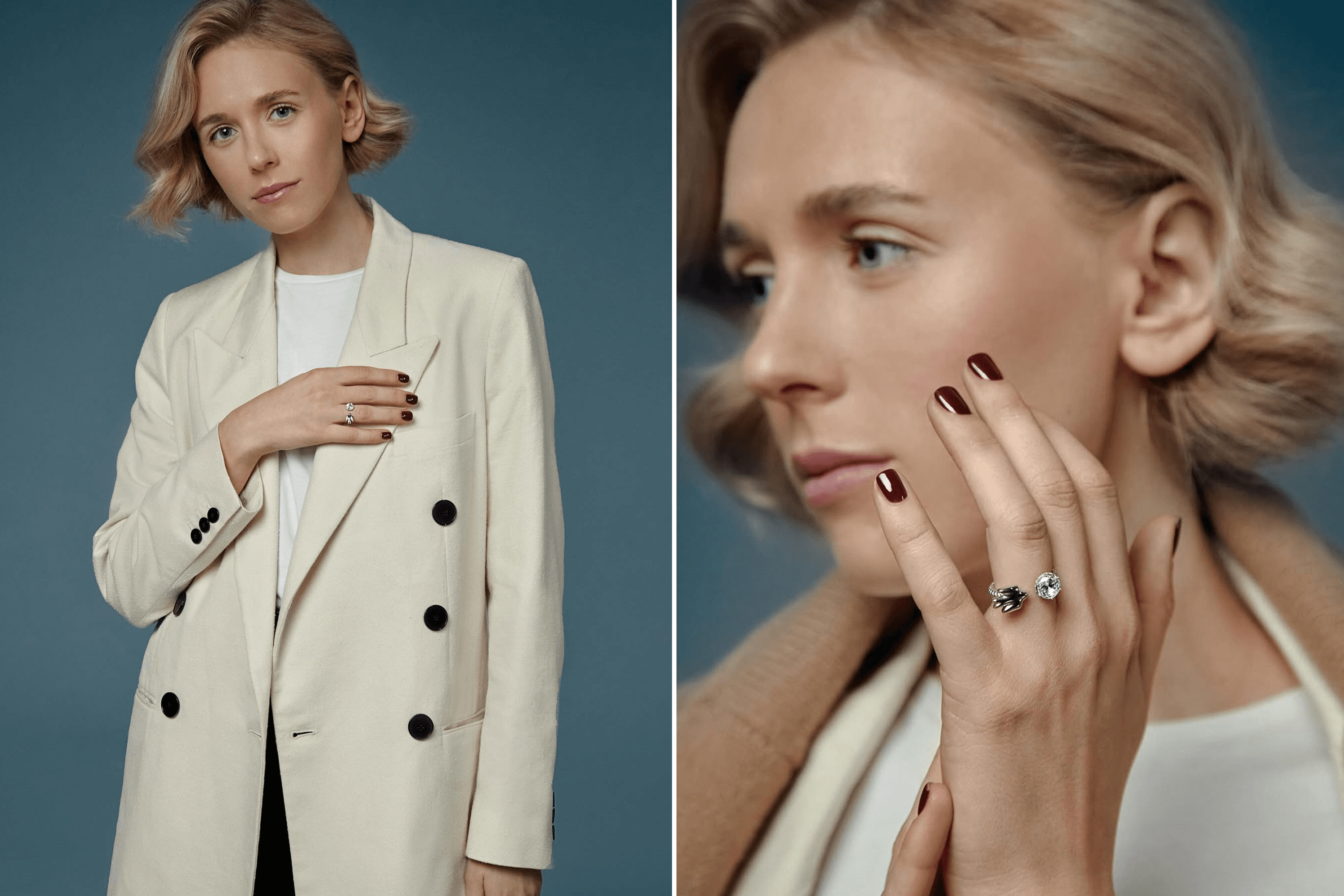
Which markets have shown the greatest interest in your products?
M. G.: In the B2C segment, our strongest response came from customers in the United States. The key role in B2B was played by international trade shows such as Maison&Objet, Ambiente, and Pitti Uomo, where we presented our collections and attracted new clients. For example, we received an order from Globus Group — a department store chain in Sweden and Switzerland that purchased our ceramics for their stores. That confirmed our strong competitiveness in the global market.
Are the prices different in Ukraine and international markets?
N. K.: On international markets, prices are set taking into account shipping costs, customs fees, and partner margins. The largest difference is in ceramics, where prices are almost double. For jewellery and outerwear, the difference is minor — about 2 to 10%.
M. G.: In Ukraine, we deliberately keep our prices lower. We understand the difficult economic situation and want as many people as possible to afford our pieces. It’s also about maintaining our reputation and loyalty to the local audience that has supported us from the very start.
When did Gunia Project move beyond being just a brand to become a cultural phenomenon?
N. K.: It was never just a design brand. We aimed to create timeless pieces that could be passed down through the generations as heirlooms.
Between 2017 and 2019, we focused on ethnographic research and worked without any commercial goal. It wasn’t until 2019 that we officially founded the brand. Gunia aims to promote Ukrainian culture globally through its creations. Each collection merges art with everyday objects, shaping a modern Ukrainian aesthetic. That’s what made the brand a cultural phenomenon.
M. G.: Our vision to popularize Ukrainian craftsmanship has stayed the same since 2019. What has changed is how audiences perceive it. As more people discovered Gunia Project, it became clear that our work is about reinterpreting and preserving cultural heritage.
Why did you decide to develop such a wide range of product lines — from ceramics to scarves, jewellery, and clothing?
M. G.: Choosing just one category would have meant limiting ourselves, and we preferred to experiment. Our first collections were launched without stock: just a few pieces available for pre-order. That approach worked well for ceramics, scarves, and glassware. As our team grew and we gained more resources, we gradually expanded the assortment to 12 product lines.
Which product lines do you see as the most promising?
M. G.: Clothing is currently the most profitable — it’s our most expensive category, so it brings the highest margins.
How do you manage to combine handmade production with scaling the business and managing a large team?
N. K.: The number of artisans we collaborate with has grown considerably, but we’ve also had to be selective. For instance, we don’t continue working with those who miss deadlines or refuse to reproduce a design. Every piece carries the Gunia Project logo, so all responsibility to the customer lies with the brand, not the individual artisan. Therefore, the most important thing that sustains the brand is quality control.
M. G.: Each artisan receives the materials and precise product specifications — every item must match the sample exactly. If standards aren’t met, the product is sent back for rework. All communication with clients goes through us, we oversee technical quality, packaging, and delivery.
Which Gunia Project products are produced in-house, and which are outsourced?
N. K.: We have our own production for clothing and ceramics. We outsource jewellery and silk accessories, wicker items, glassware, and textiles. Handmade work takes time — for example, painting a single woven belt or ceramic plate can take five to eight hours — so production is spread among 150 artisans.
Previously, you mentioned that your main market is still in Ukraine, but you have also noted growing demand from customers in China and Japan. Why do you think your products resonate with people who come from such a different cultural background?
N. K.: Even without knowing the history or cultural context, our products remain appealing and original. Clients from China and Japan value quality, uniqueness, and attention to detail that mass production simply can’t deliver.
Which markets are you currently in? And where do you find it harder to sell?
N. K.: We’re present in China, the U.S., Japan, Switzerland, Sweden, Spain, the U.K., Germany, and Canada. Despite high demand, foreign markets remain the most challenging because of logistical barriers.
M. G.: It’s difficult to name one particularly tough market — each has its own specifics. In some regions, clothing performs better; in others, ceramics. Overall, Gunia Project’s international journey is still at an early stage, so it’s too soon to say which markets are easier or harder. We’re only beginning our journey abroad.
Ok, which markets are the most promising and the most profitable for you right now, then?
M. G.: At the moment, the most profitable markets are the U.S. and Japan. The most promising one is the Asian market.
How do you handle international orders during busy periods?
N. K.: We don’t keep ready-made stock. We still operate under an “order window” system — clients can purchase collections only during specific timeframes. This helps us plan production efficiently and meet our international B2B orders, which typically take two to four months to complete.
After the loss of the clay production site in Sloviansk, how did you manage to source new materials and restore the process?
N. K.: We used all the clay we had in reserve and began looking for alternative options in Europe. Fortunately, a year later, we managed to purchase a stock of clay from Sloviansk. So now we’re once again working with Ukrainian raw materials.
Do you still have a dream of creating your own Gunia Project restaurant and hotel?
N. K.: The idea of creating a Gunia universe is still there — we want to give clients more than just products. But we don’t yet have partners for large-scale projects like that. Smaller concepts, such as a store combined with a café or a library, we can already realize on our own. But to bring bigger initiatives to life, we’ll need experienced partners from the hospitality industry.
M. G.: Yes, we’re planning to look for an investor with expertise in the hotel and restaurant business. The partnership format can vary, from developing the design on a royalty basis to joint project management. The scale may also differ, from a small boutique hotel to a large one with a hundred rooms.
You are now working on a European franchise, where Gunia Project will open individual boutiques. What will the franchise cost be?
M. G.: It all depends on the country and the size of the store. Right now, we’re testing the business model and looking at market rates in the range of €10,000 to €50,000. The final cost will become clear once we open our first physical boutique.
Did Gunia Project’s appearance in Netflix’s Emily in Paris boost your sales?
N. K.: For us, it was more a sign of recognition. We didn’t see a huge spike in sales after the episode aired, but it definitely increased the brand’s visibility.
How did the partnership with Netflix come about?
M. G.: Our PR agency, Gogola, reached out to the show’s styling team and introduced them to our brand. Negotiations began about a year and a half before the season was released. We sent around 28 pieces, though we didn’t know which ones would be featured. Normally, Netflix never mentions brand names unless it’s a paid collaboration.
Are you worried about brands that imitate your style and sell similar pieces at lower prices?
N. K.: We’re actually glad about it, because it supports traditional crafts and creates jobs. What does concern us is direct copying without any reinterpretation. We’d like to see more creativity from those brands.
M. G.: We’re actually happy when other brands help generate more demand in the market. For instance, there are only about five masters of blown glass in Ukraine today — and one of them works with us. It’s physically demanding work beside a hot furnace, so even though young people can be trained in this craft, few pursue it, even though it can be quite profitable.
Saying that, do you take any steps to protect your intellectual property?
N. K.: We do hold patents for our key designs, but it’s quite difficult to protect them — even a minor modification makes the product legally different.
Who creates designs in the Gunia Project, and how does the design development process look?
M. G.: The process depends on the product category. A clothing collection and a ceramics collection are created in completely different ways, but the overall structure is the same: Natalia and I determine the theme of the collection, create mood boards, and sometimes we bring in an ethnographer. Then we draft basic sketches and pass them to a designer, who develops a few concepts. Together, we choose the best ones and move them into production. For clothing, we select the fabrics and materials; for ceramics, we create 3D forms, checking proportions and overall appearance. Then we produce samples and make appropriate refinements — adjust colour, texture, size, or technical aspects. Once a design is approved, it’s photographed, specifications are finalized, and it goes into full production.
What is the most enjoyable part of being a designer for you? N. K.: The chance to create — to experiment with materials and techniques, and to watch an idea become a real product. At the same time, you have to find inspiration even during difficult times and deal with a range of production issues along the way.
M. G.: It’s incredibly fulfilling to see an object we’ve created together connect with people and become part of their everyday lives.
What do your mood boards for new collections usually look like?
M. G.: They’re very eclectic, historical discoveries, ceramic elements, traditional towels, embroidery, ethnographic studies, songs, ornaments, artisans’ sketches, and icons. Any of these sources can spark the concept for a new collection.
How many collections does Gunia Project release each year, and how often do they change?
N. K.: We produce about eight collections annually. The main ones are the winter and Easter collections for ceramics, and the winter and spring drops for clothing. We also create special holiday editions — for Valentine’s Day, Independence Day, and Mother’s Day. Right now, for instance, we’re working on our Spring 2026 clothing collection. It will feature a wider variety of fabrics and textures, and for the first time, a line of bottoms, trousers and skirts.
What share of your revenue comes from wholesale orders and what from retail sales?
M. G.: Roughly 20% of our income comes from wholesale orders, and about 80% from retail sales. We’re focusing on developing international markets through B2B, since those partners already have established customer bases. The margins are smaller than in direct sales, but the results are more predictable because of the existing audiences.
Where would you like to sell abroad?
M. G.: We see Gunia Project represented in leading department stores and on major online platforms, particularly Dover Street Market and Selfridges.
You also create books, launch special charitable projects, and design symbolic jewellery. What does your “Scythian Gold” piece represent?
N. K.: Gunia Project, together with the Ministry of Culture and Strategic Communications of Ukraine and the National Museum of the History of Ukraine, introduced this piece as a story about culture reclaiming its voice. The actual collection of Scythian gold, as you may know, remained in the Netherlands for years due to legal battles with Russia — but it’s now back home in Kyiv— and our jewellery piece became a reflection of that victory.
Are you interested in future collaborations with museums?
M. G.: Absolutely — and you’ll be seeing more of them. For us, working with museums isn’t just about design, it’s about a dialogue with history. Ukrainian culture is rich with artifacts and stories that can be reinterpreted in contemporary forms, bringing them closer to people today.



